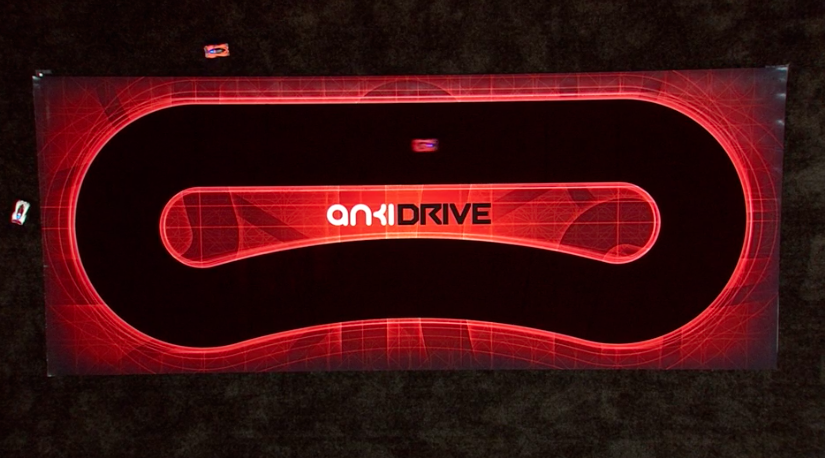
An early presentation at Apple’s World Wide Developers Conference (WWDC) on Monday featured a cool car game that may have immediate implications on the future of autonomous driving in the real world.
The team from Anki debuted a slot-car type game called “AnkiDrive” that featured three – and after a few hiccups – then four cars (real, physical little cars, not cars on a screen) on a small track (above) that rolls out like a big poster. Except the little battery-powered cars didn’t adhere to any slots and were controlled wirelessly by AI-type software on Apple computer products operating nearby. Anki’s co-founder stated “We’re using iOS devices not just as remote controls, but as the brains behind autonomous devices.”
As the cars zoomed around the track, the computers automatically sensed their locations and (usually) kept them from colliding. And they weren’t exactly creeping along, either. Watching them slow, turn, speed up, give space and pass – all on their own – was enthralling.
A “special” fourth car was introduced and the Anki developers instructed the other cars to try and block it’s progress, while the fourth car worked to get around them – all autonomously and while staying on the track. What was special about the red fourth car? This was a game, of course, so it had been “weaponized” and proceeded to blow the other cars off the track using virtual missiles.
But watching the game play out, it was tantalizing to imagine the action on a much larger scale, say that of a city, and the cars full of people chatting on phones and otherwise riding along without a care because the car was being controlled by a wireless network and a pumped-up version of the intelligence program.
Combined with improved versions of in-car technologies now available including automatic braking, rear-end collision avoidance, pedestrian/cyclist collision avoidance, lane departure warning (with automatic steering), blind-spot detection, automated parallel parking abilities, adaptive cruise control – and so on – the little racing game’s technology could be one more missing link in bringing safe, reliable autonomous driving to congested cities.
Editors' Recommendations
- How a big blue van from 1986 paved the way for self-driving cars
- Apple Car will be fully autonomous with no driver input, insiders claim
- Apple buys Drive.ai and shifts its autonomous car plans into high gear


